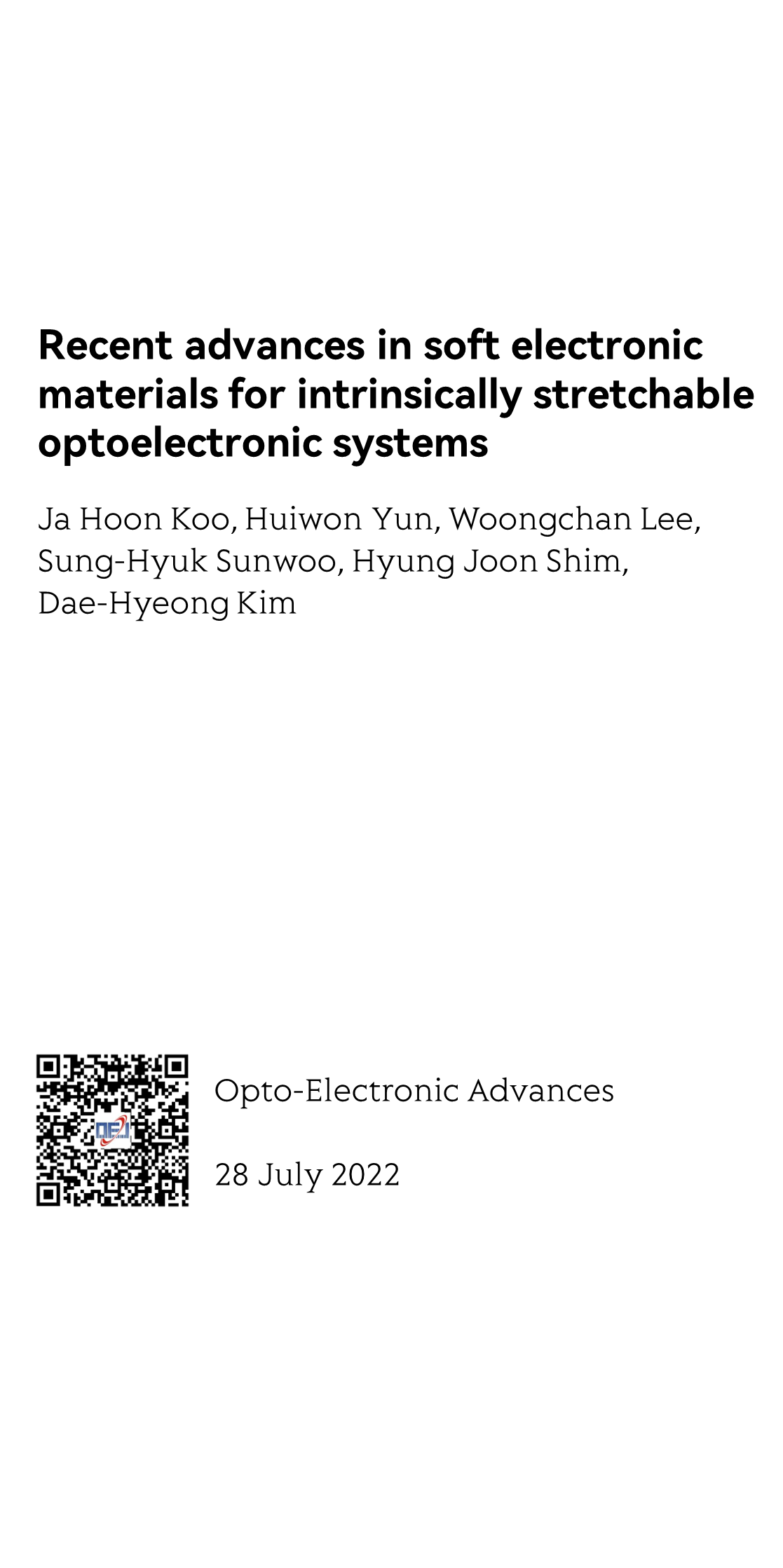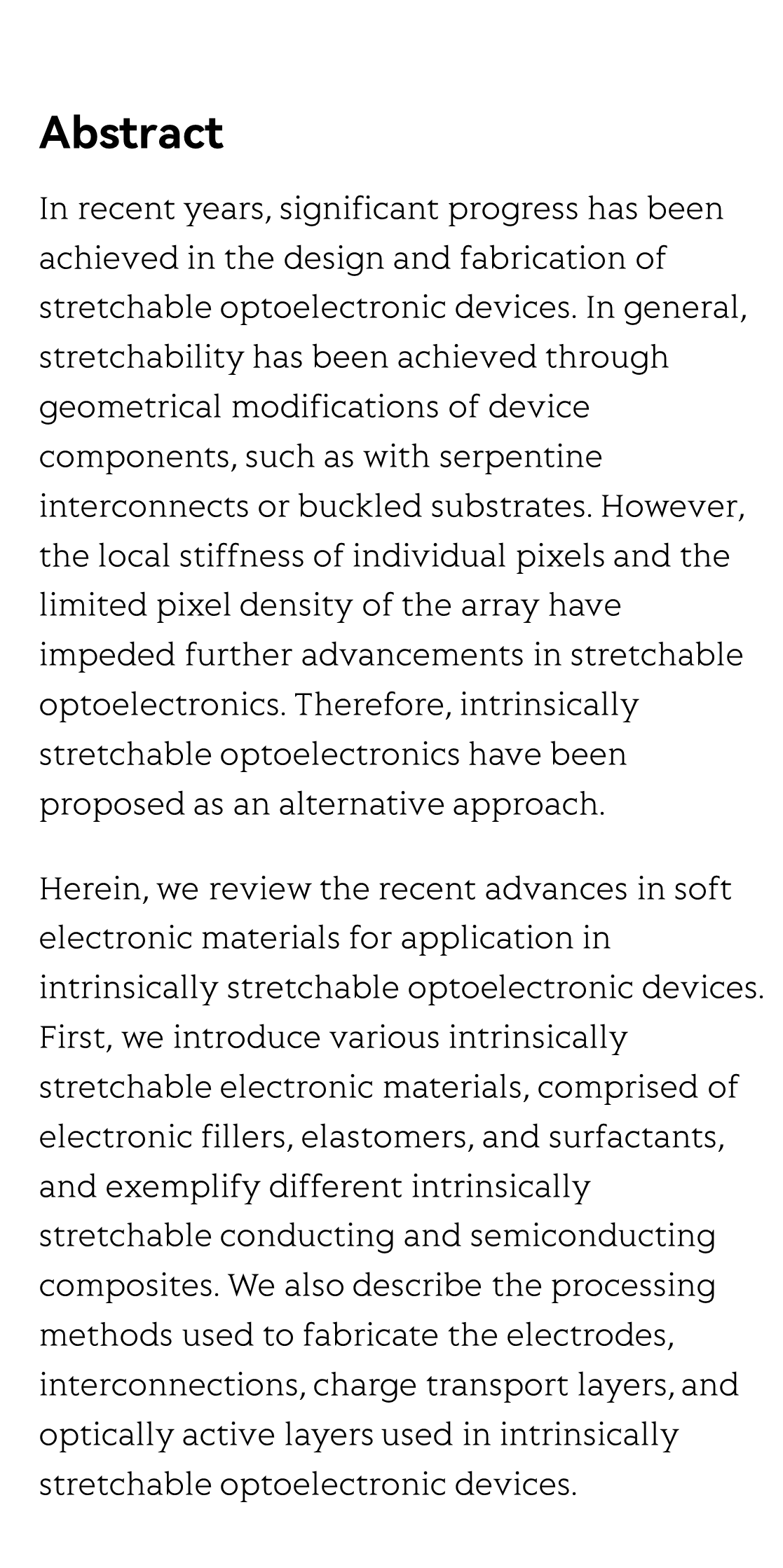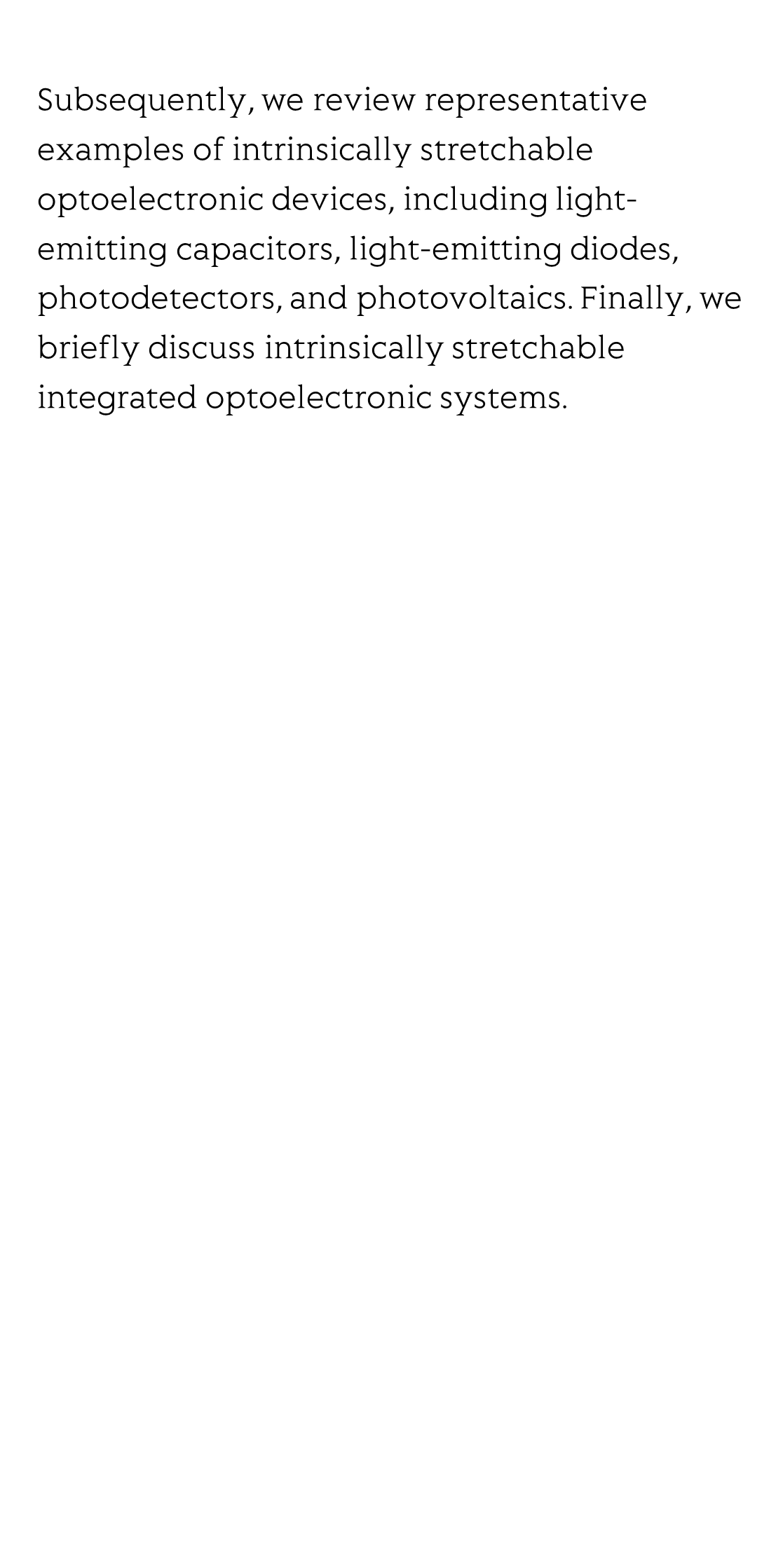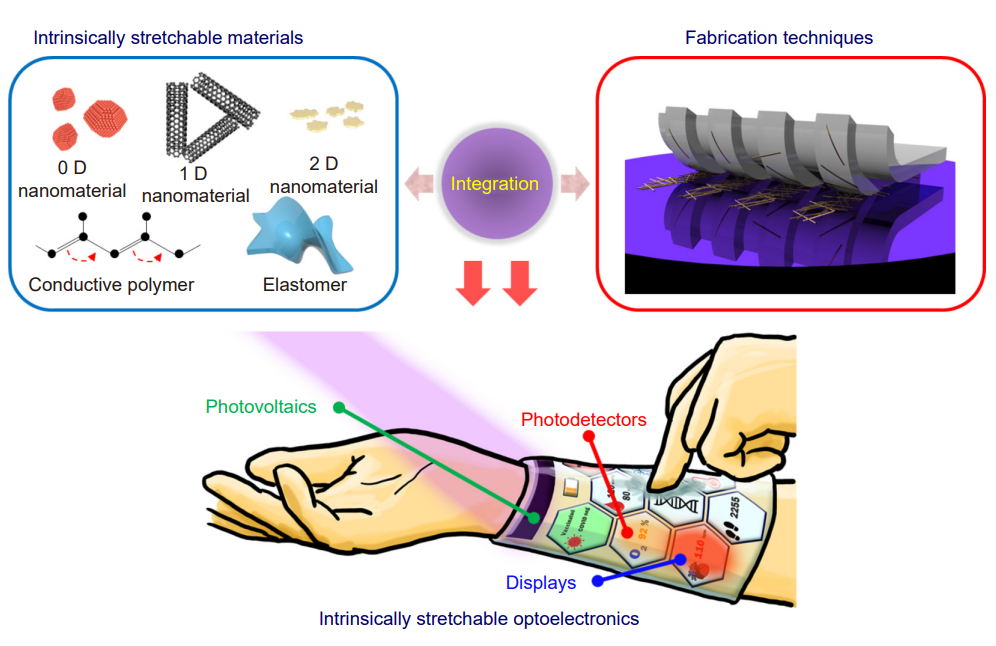(Peer-Reviewed) Recent advances in soft electronic materials for intrinsically stretchable optoelectronic systems
Ja Hoon Koo ¹, Huiwon Yun ¹ ², Woongchan Lee ¹, Sung-Hyuk Sunwoo ¹ ², Hyung Joon Shim ¹, Dae-Hyeong Kim ¹ ² ³
¹ Center for Nanoparticle Research, Institute for Basic Science (IBS), Seoul 08826, Republic of Korea
² School of Chemical and Biological Engineering, Institute of Chemical Processes, Seoul National University, Seoul 08826, Republic of Korea
³ Department of Materials Science and Engineering, Seoul National University, Seoul 08826, Republic of Korea
Opto-Electronic Advances
, 2022-07-28
Abstract
In recent years, significant progress has been achieved in the design and fabrication of stretchable optoelectronic devices. In general, stretchability has been achieved through geometrical modifications of device components, such as with serpentine interconnects or buckled substrates. However, the local stiffness of individual pixels and the limited pixel density of the array have impeded further advancements in stretchable optoelectronics. Therefore, intrinsically stretchable optoelectronics have been proposed as an alternative approach.
Herein, we review the recent advances in soft electronic materials for application in intrinsically stretchable optoelectronic devices. First, we introduce various intrinsically stretchable electronic materials, comprised of electronic fillers, elastomers, and surfactants, and exemplify different intrinsically stretchable conducting and semiconducting composites. We also describe the processing methods used to fabricate the electrodes, interconnections, charge transport layers, and optically active layers used in intrinsically stretchable optoelectronic devices.
Subsequently, we review representative examples of intrinsically stretchable optoelectronic devices, including light-emitting capacitors, light-emitting diodes, photodetectors, and photovoltaics. Finally, we briefly discuss intrinsically stretchable integrated optoelectronic systems.
Flicker minimization in power-saving displays enabled by measurement of difference in flexoelectric coefficients and displacement-current in positive dielectric anisotropy liquid crystals
Junho Jung, HaYoung Jung, GyuRi Choi, HanByeol Park, Sun-Mi Park, Ki-Sun Kwon, Heui-Seok Jin, Dong-Jin Lee, Hoon Jeong, JeongKi Park, Byeong Koo Kim, Seung Hee Lee, MinSu Kim
Opto-Electronic Advances
2025-09-25
Dual-frequency angular-multiplexed fringe projection profilometry with deep learning: breaking hardware limits for ultra-high-speed 3D imaging
Wenwu Chen, Yifan Liu, Shijie Feng, Wei Yin, Jiaming Qian, Yixuan Li, Hang Zhang, Maciej Trusiak, Malgorzata Kujawinska, Qian Chen, Chao Zuo
Opto-Electronic Advances
2025-09-25







